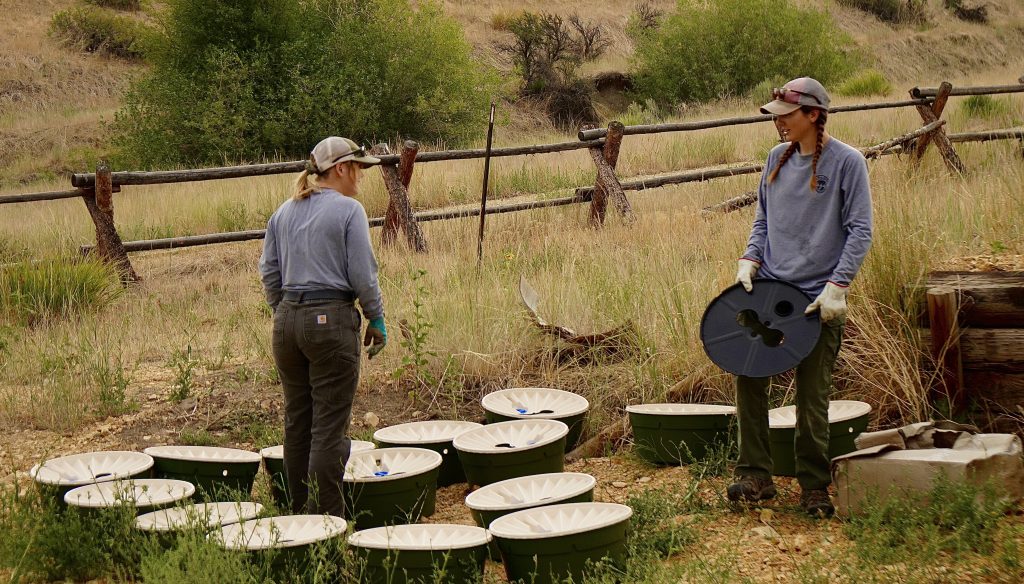Tree Planting Projects Enhances Wildlife Habitat in Magic Valley Region
On August 9, the Idaho Fish and Game Commission awarded $100,000 in grants to various organizations throughout the state, including the National Wild Turkey Federation.
The NWTF South Hills Strutters Chapter, based in the Magic Valley region, applied for the regional grants and was awarded $3,000 in funding. The chapter specifically sought this funding to acquire tree watering boxes, for use in supporting tree planting projects in locations such as Big Cottonwood Wildlife Management Area and other areas within the Magic Valley Region.
Over the last decade, NWTF volunteers have played an essential role in collaborating with IDFG on numerous habitat enhancement projects within the Magic Valley Region. Occasionally, tree plantings face challenges due to inadequate water availability, especially during the crucial initial years of establishment.
South Central Idaho, classified as a high desert region, typically receives an average annual precipitation of around 10 inches. The majority of this moisture arrives during the winter months when plant life remains dormant. Given these conditions, ensuring the survival of planted trees and shrubs in habitat improvement locations within this region poses a challenging task.
"Large trees for roosting and mast producing shrubs are important components of wild turkey habitat, but they also provide necessary habitat for a multitude of wildlife species found in this region of the state," said Collin Smith, NWTF district biologist. "Because the limited precipitation that falls across this area of the Snake River Plain can make the establishment of new plantings challenging, we're always looking for methods to improve success. To date, the use of these automatic drip wick water boxes on other projects in Idaho has proven promising."
Implementing "in-field" water capture boxes offers a promising solution, aiding the success of tree plantings in arid environments by delivering a maintenance-free source of irrigation.

Through this project, the NWTF will engage in planting trees and shrubs, as well as installing tree watering boxes across various wildlife management areas. The project has been developed in close collaboration with the IDFG wildlife division staff to restore habitat in regions impacted by fires. The advantages provided by tree plantings are expected to yield enduring results that extend well beyond a span of 50 years.
Although these efforts primarily focus on wild turkeys, the positive outcomes will extend to other wildlife as well. Deer, upland game birds, and numerous non-game species will benefit from enhanced security cover, bedding areas, nesting sites, thermal protection and forage sites. Over time, mature trees resulting from this initiative will serve as roost sites for wild turkeys and perches for other bird species. These habitat enhancements will not only offer sportsmen more extensive opportunities for walk-in turkey hunting but also foster improved habitat conditions, leading to the success of other prominent game species through the enhanced habitat diversity.
The selection of tree species for planting will be in accordance with IDFG's plans, ensuring alignment with their specific objectives. The designated planting sites will be specified by IDFG wildlife staff, leveraging their expertise in optimal habitat placement. Survival monitoring will take place to ensure the success of previously planted trees, and those requiring replacement will receive priority in the replanting process.
NWTF volunteers are pivotal in providing the necessary labor to carry out these plantings, demonstrating their commitment to the project's success.
Plantings will begin in fall 2023, and the estimated completion time for this project is fall 2024.
